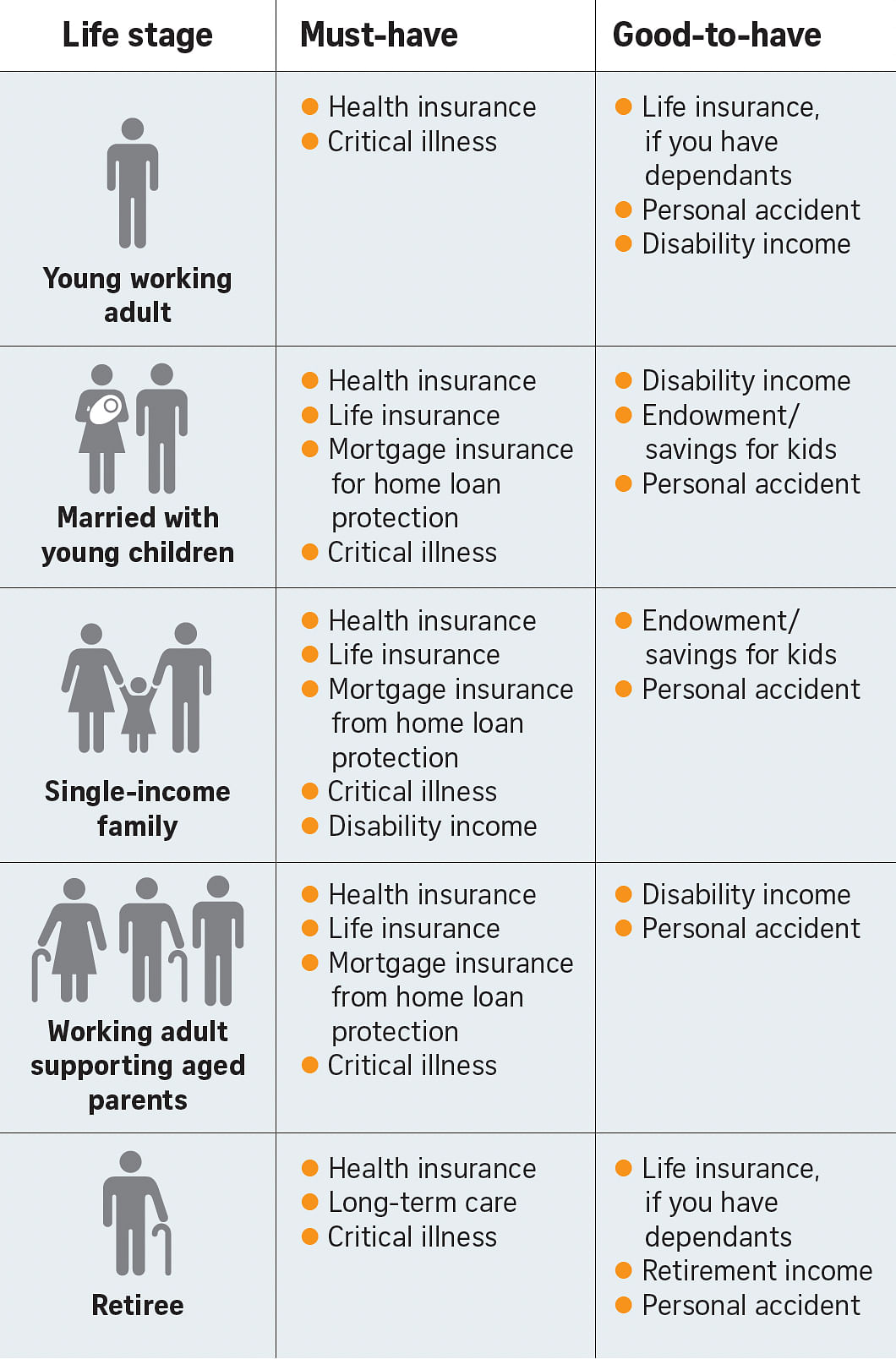BRANDED CONTENT
How a holistic view of your finances can help you know your gaps, plan ahead
You’ll need a multi-pronged approach to manage your exposure to inflation, including adequate insurance, say experts

Recent expansion of SGFinDex to include insurance data lets Singaporeans have a consolidated view of their finances.
PHOTO: GETTY IMAGES
Genevieve Chan, Content STudio
Follow topic:
Ms Syazana Izzati, 29, is careful with her money. The associate account director knows where every penny goes – which she considers key, as the cost of living continues to rise.
Yet she’s stumped when it comes to her insurance. She knows it’s an important part of her financial plan, but she just doesn’t have the details at hand.
“I know which insurance policies I have but, coverage-wise, only to a small extent,” says Ms Syazana, who has life insurance, hospitalisation and two insurance-linked policies.
“For example, I know that my hospitalisation insurance covers me for medical expenses at all private hospitals, but that’s only because I made a deliberate decision to find out and remember it.”
Finding out such information used to be tedious, especially since she has policies with different insurers. She would have had to comb through insurance documents just to find out her exact coverage, or when policies mature.
Cue Ms Evy Wee, head of Financial Planning and Personal Investing, DBS Bank, with an answer for those without a clue: It can be as simple as just one click.
This follows the expansion, earlier this month, of the Singapore Financial Data Exchange (SGFinDex) service to include insurance data.
“The inclusion of insurance policy data in SGFinDex marks a significant step forward for consumers in Singapore,” says Ms Wee. “They are able to benefit from a more complete view of their finances with the consolidation of information on their life, accident and health insurance policies in one place.
Singaporeans can now link their insurance policies from seven major insurers – AIA, AXA, Great Eastern, Income, Manulife, Prudential and Singlife with Aviva – for a consolidated view of their financial positions.
SGFinDex was launched in December 2020. Through the service, individuals can access data from various private and public agencies on their loans, deposits, CPF balances and investments via their bank or insurer’s platform, or on the Government’s financial planning tool MyMoneySense.
It’s a move that Ms Syazana welcomes. “It allows me to have a non-biased view of what my insurance gaps are. I don’t need to depend on my insurance agent to share that information with me and, who knows, might even try to ‘soft sell’ a plan to me.”
Know your gaps
Knowing how you are insured is good but also important is identifying your insurance gaps.
There are a few steps. First, review your insurance objectives and time frame, advises DBS’ Ms Wee. Consider the number of dependents you have, outstanding liabilities including your mortgage, existing insurance plans, your savings, any inheritance and assets, and family medical history.
For death coverage, the general rule-of-thumb is to get insured for about nine to 10 times your annual income. For critical illness plans, Ms Wee recommends people be covered for about five years of their gross income. “That is typically the amount of time we need to recuperate from a critical illness,” she explains.
Business owners have additional considerations to keep in mind, says Ms Wee, such as tax liabilities and capital that must be set aside in the event that they are unable to continue working.
The next step is to find out what your existing coverage is. You can do this by consolidating your insurance policies and summing up the insurance coverage you have.
Those who link their insurance policies via SGFinDex on the NAV Planner, DBS’ digital advisory tool can access this via the summary dashboard, on which they can see the total number of policies they hold, and total annual premiums due.
They will also be reminded about upcoming premiums, and can track when their policies mature or when their payouts are due (based on guaranteed maturity value).
Lastly, calculate your protection gap: This is the difference between your insurance coverage needs and your existing coverage and resources.
NAV Planner users can easily view their insurance gaps on the platform, and receive tailored recommendations. “Akin to a financial advisor, it will help customers to objectively calculate their protection coverage based on the number of declared dependants, a process that is aligned with industry benchmarks set by the Life Insurance Association (LIA),” says Ms Wee.
Plan ahead
Beyond simply knowing what your current gaps are, having a holistic view of your finances can help you plan ahead.
Take Ms Syazana, who currently lives with her parents in a Housing Board executive flat, for example. She is getting married next month, and will be moving out to live in a rented apartment while she waits for the keys to her Build-to-Order flat, which will only be ready in 2024.
“I’m moving on to the next stage of my life, so there will be more financial commitments; Without proper planning, I might be shooting myself in the foot.”
“Having a holistic view of my finances gives me a clear idea on how much I have spent on my insurance premiums, and how much I will need to spend on a yearly basis,” she says.
She knows that her insurance coverage needs may change as she begins a new chapter in life, such as having to buy mortgage insurance. “Insurance is a long-term commitment, so a lot of research is needed for me to come to an informed decision. (SGFinDex) will help with just that.”
Ms Wee agrees. She gives the example of married couples with young kids: “Their financial priorities may include a home mortgage and saving for kids’ education. Hence, they would usually need a higher amount of death insurance coverage as compared to an individual who does not have dependants.”
On the other hand, for those who are older, says Ms Wee, having sufficient long-term care insurance will become a greater priority as they face a significantly higher risk of being severely disabled.
To help customers more accurately estimate their coverage needs, DBS has also rolled out additional features in NAV Planner. This includes the estimated cost of miscellaneous expenses, such as the cost of engaging a helper during recovery, and a built-in option for customers to adjust to the inflation rate.
What do you need?
In times of high inflation, insurance may be the last thing we think about, as we face immediate concerns like rising prices and a lag in income growth.
A survey by consultancy firm Mercer on Tuesday found that the real wage of employees in Singapore may fall by 2.95 per cent this year due to elevated, persistent inflation.
You will need a multi-pronged approach to effectively manage your exposure to inflation. That includes being adequately insured, says Ms Evy Wee, head of Financial Planning and Personal Investing, DBS Bank.
“There is nothing as constant as change and uncertainties in life,” says Ms Wee. “The key role of insurance is to financially protect us against life’s uncertainties that could derail our financial plans, such as accidents, an illness or premature death.”
Here are some insurance policies that Ms Wee recommends, based on your life stage.

This is the sixth of a seven-part series titled "Win the race against inflation", in partnership with


